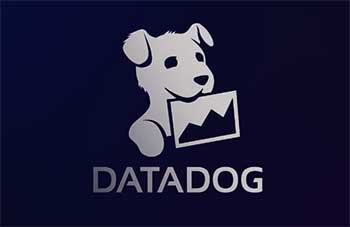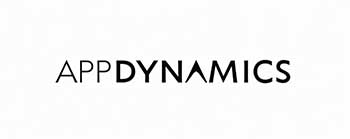When it comes to application performance monitoring (APM) tools, Datadog and AppDynamics are two of the top options. Both provide comprehensive monitoring and analytics for complex applications and infrastructure.
However, there are some key differences between the two that are worth considering when deciding which one is the best fit for your needs.
A Brief Comparison Table
| Feature | Datadog | AppDynamics |
| Pricing | Usage-based pricing starting at $15 per host/month | Tiered pricing based on number of nodes monitored |
| Monitoring Scope | Infrastructure, applications, logs, synthetics, network, real user | Applications, database, infrastructure |
| Dashboards and Visualizations | Highly customizable, wide selection of out-of-the-box widgets and graphs | Pre-built dashboards with customization options |
| Alerting | Flexible alerting rules across all data types | Application-focused alerting |
| Integrations | 400+ third-party integrations | Limited integrations focused on common enterprise apps |
| Machine Learning | Anomaly detection, forecasting, and clustering | Limited machine learning capabilities |
| Distributed Tracing | Full-featured tracing with integrated views | Requires additional AppDynamics products |
Overview Of Key Capabilities
Datadog
Datadog is a cloud-based monitoring and analytics platform that provides full-stack observability across infrastructure, applications, logs, networks, and more. Some of the key capabilities include:

- Infrastructure Monitoring – Monitor hosts, containers, orchestrators, servers, VMs, and more across on-prem and cloud environments. Includes metrics, events, and logs.
- APM – Trace requests across distributed systems to pinpoint performance issues. Includes mapping of service dependencies.
- Synthetic Monitoring – Simulate user journeys from global locations to monitor availability and performance from an end user perspective.
- Log Management – Centralize logs from across your stack and correlate them with metrics and traces.
- Collaboration – Annotate graphs, assign tags, mention team members in comments for seamless collaboration.
- Alerting – Configure alerting across all data types with flexible notification options.
- Dashboards – Build custom dashboards with a wide selection of out-of-the-box widgets and graphs.
- Integrations – Integrate 400+ applications, tools, and services including AWS, Slack, PagerDuty.
- Security & Compliance – SOC 2 Type 2 compliant, HIPAA compatible, and GDPR ready.
AppDynamics
AppDynamics focuses on application performance monitoring with extensions into infrastructure, databases, and business analytics. Key features include:

- Application Monitoring – Monitor application performance across distributed architectures. Includes code-level diagnostics.
- Database Visibility – Monitor database queries and performance.
- Infrastructure Visibility – Monitor hosts, network devices, and other infrastructure. Requires additional AppDynamics products.
- Business Analytics – Calculate business metrics like revenue per transaction. Requires additional AppDynamics products.
- Pre-built Dashboards – Out-of-the-box health dashboards for applications with some customization options.
- Alerting – Alert on application performance and health issues.
- Machine Learning – Automatically detect performance anomalies. Limited capabilities compared to Datadog’s robust ML offerings.
- Tracing – Follow a transaction across distributed systems. Requires additional AppDynamics products.
- Integrations – Monitor common enterprise apps and cloud services. More limited integration ecosystem compared to Datadog.
- Security & Compliance – SOC 2 Type 2 compliant, ISO 27001 certified, and GDPR ready.
Key Differences
Monitoring Scope
One of the biggest differences between Datadog and AppDynamics is the scope of monitoring. Datadog provides full-stack observability across infrastructure, logs, networks, synthetics, tracing, and more. This provides end-to-end visibility connecting performance between these disparate systems.
AppDynamics focuses heavily on application performance monitoring with more limited infrastructure and database monitoring capabilities. You’ll need to purchase additional AppDynamics products to get full infrastructure or business monitoring.
Data Correlation
Related to the monitoring scope, Datadog makes it easy to correlate performance metrics, traces, and logs between applications, infrastructure, tools, etc. This makes it fast and easy to track down the root cause when issues occur across the technology stack.
AppDynamics provides more siloed visibility into applications and databases. Correlating application data with infrastructure metrics requires stitching together data between AppDynamics products.
Dashboards And Visualizations
Datadog provides highly customizable dashboards where you can build graphs and layouts tailored to your needs. The platform includes an extensive library of out-of-the-box graphing options.
AppDynamics uses pre-built dashboards optimized for displaying application metrics. You have some flexibility to customize graphs within these dashboards, but less ability to entirely customize the layout compared to Datadog.
Integrations
One of Datadog’s biggest strengths its integration ecosystem with 400+ application, infrastructure, and cloud service integrations. This provides holistic visibility across your entire tech stack in a single pane of glass.
AppDynamics offers a smaller set of integrations focused mainly on complementing application monitoring data with info from enterprise apps and cloud services. It does not provide the same breadth of integrations spanning infrastructure, containers, custom apps, etc.
Pricing
Datadog is priced on a per-host model starting at $15/host/month. You only pay for what you use, so the pricing scales as you grow.
AppDynamics uses tiered pricing based on the number of nodes monitored. The pricing is for the entire AppDynamics platform rather than specific capabilities.
Machine Learning
Datadog provides much more extensive machine learning capabilities for things like anomaly detection, forecasting, and aggregations. AppDynamics ML is focused on detecting performance anomalies.
Tracing
Datadog’s APM includes full tracing capabilities while AppDynamics sells tracing as an additional module. With Datadog, traces are integrated directly into relevant infra and app dashboards.
Also Read: Comparison Between Shop And Store Domain.
Which is Better for You?
When to Choose Datadog
You need full-stack observability – If you want end-to-end visibility spanning infrastructure, containers, networks, and multiple applications, Datadog provides this out of the box without needing to stitch together data from multiple products.
Your environment uses many custom applications – Datadog’s integration ecosystem gives visibility into hundreds of third-party and custom applications that AppDynamics does not support out of the box.
You want maximum customization – Datadog makes it easy to build custom dashboards with graphs and layouts tailored to your use cases.
Usage-based pricing model preferred – Datadog’s per-host pricing scales with your infrastructure versus complex tiered pricing.
When to Choose AppDynamics
Your focus is application monitoring – If you just need deep visibility into application performance and health, AppDynamics provides this out of the box without the added cost of broader infrastructure monitoring.
You use mostly mainstream enterprise applications – For standard apps like Oracle, SAP, and Salesforce, AppDynamics provides targeted integrations and monitoring capabilities.
Your team prefers pre-built dashboards – AppDynamics dashboards come optimized for displaying common application metrics versus fully customizable layouts.
You want business intelligence – AppDynamics business analytics capabilities give visibility into things like revenue per transaction. Requires additional licensing beyond core APM.
FAQs
The main differences are that Datadog provides full-stack monitoring beyond just applications while AppDynamics focuses heavily on application performance. Datadog also has significantly more integrations, custom dashboarding, and machine learning capabilities while AppDynamics offers more pre-built dashboards and business analytics features.
The main competitors to AppDynamics for application performance monitoring (APM) include Dynatrace, New Relic, Splunk, and Datadog. Dynatrace in particular competes closely in capabilities.
Some key advantages of Datadog over AppDynamics are the full-stack observability spanning infrastructure, logs, and applications, significantly more integrations, unlimited custom dashboarding, usage-based pricing, and more advanced machine learning.
Datadog and Dynatrace take a similar full-stack approach but Datadog has significantly broader infrastructure monitoring capabilities spanning hosts, containers, orchestrators, servers, and more. Datadog also has more flexibility in custom dashboards versus Dynatrace’s focus on pre-built views.
Also Read: Is Revel Better Than Lightspeed?
Conclusion
To conclude, both Datadog and AppDynamics are powerful APM tools, but they have some important differences in their approach. Datadog is a better choice if you need full-stack observability, maximum customization, or predictive analytics.
AppDynamics is ideal if you just require application monitoring, have mostly mainstream apps, or want pre-built dashboards and business metrics. Evaluate your specific use cases and requirements to determine which platform is the best fit. Both provide robust capabilities for monitoring application performance, so it comes down to the additional features that provide the most value for your tech stack.